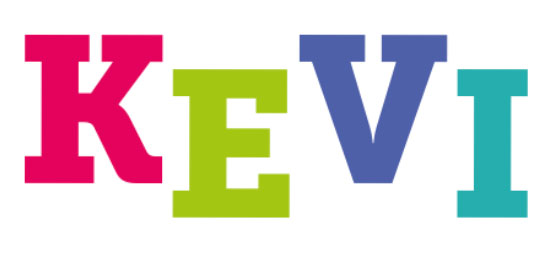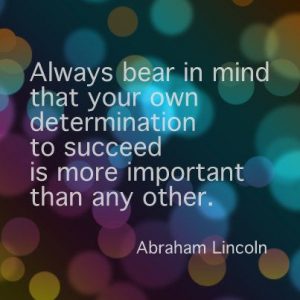Imagine you could program yourself like a simple robot, with rules like, “when situation X occurs, do Y.” What rules would you choose to program yourself with to improve your life or the lives of those around you?
Interestingly enough, we can program ourselves in this way, and it’s not even that hard to do. As a simple example, you can program yourself so that when you FIRST ENTER YOUR KITCHEN IN THE MORNING, you always DRINK A TALL GLASS OF WATER. Or you can create a rule in your mind so that when you TAKE YOUR FIRST BITE OF EACH MEAL, you DEEPLY SAVOR IT to get more pleasure from your food.
These if-then plans are sometimes known as “implementation intentions” in the psychology literature (https://en.wikipedia.org/wiki/Implementation_intention) or TAPs (i.e., trigger action plans – a term used by the Center for Applied Rationality – see: https://www.rationality.org). Below, I share my own spin on this concept and describe how you can apply these if-then plans to make improvements in many different areas of your life, including health, learning, happiness, productivity, relationships, and rational thinking.
I’ll start with a quick, step-by-step guide to programming yourself, then list several of my favorite “self-programs.” Feel free to pick a few from the list to try yourself!
— Steps for Programming Yourself —
Step 1 – Choose
Choose a situation (S) and an action (A) that you’d like to take when you’re in that situation. For instance, the situation might be ARRIVING AT HOME AFTER WORK. The action might be PLACING YOUR KEYS IN A BOWL BY THE DOOR, so you always know where they are. See my list of self-programming examples down below for many more ideas.
Step 2 – Intend
Set an intention to perform that action (A) whenever you are in that situation (S). This means genuinely committing (to yourself) to take the action every time you encounter the situation. Note that there’s a subtle but critical difference between thinking about doing something and committing to doing it. You have to do the latter.
Step 3 – Associate
Now it’s time to create an association between the situation (S) and the action (A) so that when S occurs, A immediately pops into your mind. Basically, you’ll be mentally linking the two elements.
Here are a few strategies for creating this connection. The more of these strategies you use, the better. But they won’t all apply to all situations.
Strategies for linking the situation (S) and the action (A) in your mind:
• Create: If you can artificially create the situation, then do so repeatedly, following through with the action each time. For instance, if the situation is finishing brushing your teeth, and the action is flossing, practice holding your toothbrush to your mouth as though you just finished brushing, then putting down your toothbrush and immediately picking up the floss. Do this 20 times in a row to create the connection (A ⟶ S) in your brain.
• Imagine: If you are good at forming mental imagery, vividly visualize the situation occurring, followed by imagining yourself taking the desired action. Repeat this 20 times. If, in real life, you anticipate variations in how the situation plays out, modify your visualizations to include potential variations. That way, you don’t become trained on a too-narrow version of the situation.
• Write: Jot the if-then intention on a piece of paper, and leave it somewhere in your home where it is noticeable. When you get used to it being in that location to the point where you’re barely noticing it anymore, move it somewhere else in your home so that it stays fresh.
• Speak: repeat the phrase “whenever S occurs I’ll do A” 20 times (either aloud, or in your mind), replacing S and A with the corresponding situation and action.
• Review: make a list of all the if-then intentions you’re currently working to create in your mind, and review that list each morning, just after you wake up. Leave it on your bedside table or on your work desk so you can’t miss it.
• Motivate: make a list of the benefits (to yourself or others) of taking that action every time you are in that situation. This may increase your motivation to follow through with the plan.
• Involve: tell someone you trust that you plan to take that action whenever you are in that situation (ideally, someone who might be around when you are in that situation so that they can help remind you).
• Reflect: think about a time when you succeeded at making one of these if-then plans for yourself in the past. Take a minute to write about how you accomplished that. Now take another minute to write about how you could apply what you learned in that case to this new situation (this is the “Habit Reflection” technique: http://bit.ly/385cn5D). I think it’s more effective to actually do the writing, not merely thinking about what your answers would be.
Step 4. Act
Every time you find yourself remembering to take the action in a given situation, actually do it! In the beginning, try hard to do the action every single time the action occurs (without missing any), as this will help establish a robust link in your mind between the situation and action.
If you follow through consistently enough and keep it up for long enough, most likely, the action will eventually turn into a habit triggered by the situation.
But what rules is it actually useful to program yourself with?
Here’s my list of favorite “self-programs.” Some of these I’ve already installed as habits, others I’m still learning to associate with the trigger. Still others I merely aspire to one day have installed in my mind. Finally, hold value but don’t quite match my lifestyle, so I figure they are still worth including.
I’ve written each self-program in the form: Situation ⟶ Action
Meaning that you intend to perform the action every time the situation occurs.
— My Favorite Self-Programs —
HEALTH
* You enter the kitchen for the first time after waking ⟶ drink a tall glass of water
* You finish your first beverage in the morning ⟶ gently stretch a part of your body that has poor mobility or that is unreasonably tight for 1-2 minutes (e.g., It used to be my right shoulder, but, thanks to this habit, my decade-long shoulder problem is 90% resolved!)
* You close your eyes to try to fall asleep ⟶ breathe slowly and deeply, then gently focus your attention on your breath. Whenever you become distracted or find yourself thinking of something else, notice that it’s happened and gently refocus your attention back on your breath. Try to continue this until you’re asleep.
* You feel hungry before bed ⟶ eat carrots, nuts, or an apple (instead of junky snack food)
* You put down your toothbrush ⟶ floss or use a gum stimulator/rubber pick to clean between your teeth.
LEARNING
* Someone introduces you to an abstract idea that you don’t understand ⟶ ask if they could give you an example or if they could explain it using different words
* You learn something that surprises you ⟶ take a moment to consider what you previously believed about the subject (e.g., if your best friend does something that surprises you, ask them about the behavior, as it’s great opportunity to understand your friend better). Keep in mind that the sensation of surprise occurs when our perception of reality doesn’t match reality itself!
* You learn a new idea that seems worth remembering or have your own idea that seems worth remembering ⟶ jot down some notes about what you learned (ideally as simple flashcards), and be sure to review them at some point before you forget the idea (e.g., you can try out our beta tool at https://www.thoughtsaver.com to make this idea recording and reviewing process easier)
* You make a big mistake ⟶ take a few minutes to write about why you think the mistake happened (both immediate causes and deeper root causes), and what you can learn from it, to avoid making similar mistakes in the future. You can try out our “learning from mistakes” tool to make this process easier (see: http://bit.ly/3biQ3HN).
* Someone explains something complicated to you, and you’re not certain that you understand it ⟶ try to explain the idea back to the other person in your own words and see if they agree you understood it properly (e.g., “So are you saying that…”)
HAPPINESS
* You take your first bite of food at a meal ⟶ pay very close attention to the taste and texture, chewing slowly to deeply savor that first bite. We can get so much more pleasure from food if we direct our attention in the right way, upgrading meals from two-star to four-star, just by maintaining the right focus!
* You wake up in the morning ⟶ think about one thing you are looking forward to (it could be small, like your morning cup of tea, or large, like a big project you are launching in a month). This can help get you looking forward to the day.
* You lie down in bed for the night ⟶ think of one fond memory from your life. If you have trouble thinking of random fond memories, start with a random time frame (e.g., “last week”) or place (e.g., “the beach”) or activity (e.g., “sports”) and use that prompt to jog your memory.
* You leave your bedroom for the first time each morning ⟶ think of one thing you are grateful for.
* You finish checking social media ⟶ smile and think of something you think is good or something that makes you happy.
* You get a calf cramp ⟶ flex the toes on the corresponding foot towards your head (moving your heel away from you). This will often alleviate the cramp immediately (if that doesn’t work, drink a shot of juice from a pickle jar, which is, apparently, an effective alternative).
* You receive a nice compliment ⟶ write it down immediately so that you can get the benefit of experiencing it more than once. You can even keep a list of the best compliments you’ve ever received.
* You notice a sudden change in your emotional state (e.g., you start becoming anxious, sad, frustrated, or angry) ⟶ immediately give yourself the best quick explanation you can for why your emotions may have shifted. It’s often easier to figure out the cause if you ask this question immediately, compared to, for example, interpreting it 20 minutes later. I call this the “Inner Why” technique (you can learn more about it here: http://bit.ly/2uhJvc1)
RELATIONSHIPS
* Someone starts a conversation with you ⟶ fully focus on what the person is saying, giving them your complete and genuine interested attention (see: http://bit.ly/2SIPzBx)
* Someone you just met tells you their name ⟶ focus on the name as they say it with the intention of remembering it, then repeat their name back (e.g., “nice to meet you Sam”). This can really help with remembering people’s names. Even better, use the Tacayo Technique if you really want to remember their name (see: http://bit.ly/2upNxPr)
* You think something positive about a person that you are confident they would feel good hearing ⟶ send it to them as a message or say it to them directly, if practical. As the adage goes, “thinking something nice about a person without saying it, is like wrapping a present and never giving it.”
* You see someone you really like (e.g., a close friend) ⟶ channel your warm feelings for them and radiate those positive feelings on your face, your body language, and with your words, so that the person viscerally experiences how much you like them.
* You’re irritable and become provoked by something minor that someone does ⟶ take a couple slow, deep breaths before saying anything (so that you are less likely to take your mood out on the other person).
* You notice you’ve been talking for a long while in a conversation ⟶ redirect focus to the other person so that they have the opportunity to talk. Most people prefer a balanced conversation, so if you talk more than 60% (which a lot of people do, unfortunately), becoming more self-aware and considerate will markedly improve your relationships. Admittedly, I sometimes make this mistake when I’m excited about a topic (you can learn more about this preference people have, from a study I ran, here: http://bit.ly/2HcH7pr).
* You see your partner or roommate for the first time since they/you left for work ⟶ greet them affectionally and ask about their day with a genuine interest and a high level of focus.
* Someone is telling you about something that happened to them ⟶ employ active listening skills by asking questions that help them clarify their thoughts and elaborate on interesting or important details. In addition to demonstrating your interest in their life, this helps them relive their experience in a useful or pleasurable way.
* Someone you are close to unknowingly does something that hurts
you⟶ bring it up. Explain how you felt as a result of their action, why you felt that way, and what you would prefer them to do next time. Try to phrase this information in a way that is not accusatory. Stick to facts about what happened and how the facts affected you. Avoid derailing the conversation with potentially disputable assumptions (you can learn more about how to do this well here: http://bit.ly/39pIWM9).
PRODUCTIVITY
* You return home ⟶ put your keys, wallet, headphones, etc., in exactly the same place (so you can always find them).
* You’re about to finish a warm shower, and are feeling sleepy, yet you have a lot still to do. ⟶ turn the water to cold for the last 10 seconds to wake yourself and feel invigorated.
* You arrive at your work desk in the morning ⟶ put on headphones with energetic, non-distracting (e.g., acoustic) music to help get you motivated and in the zone.
* You read an email or message that would take less than 2 minutes to respond to ⟶ respond immediately, rather than procrastinating on the reply. This saves time because you won’t have to read or think about that message again, plus people generally prefer faster responses.
* You begin work for the day ⟶ write down the single most important thing for you to get done that day, which you hope to achieve even if you get nothing else done.
RATIONALITY
* You notice you are trying to convince yourself of something (e.g., “I’m too tired to go to the gym today” or “It would be too stressful to give that presentation”) ⟶ ask yourself instead “is this actually true? What’s evidence exists for and against this?” (try this tool to make this easier: http://bit.ly/31J4znR)
* You notice yourself thinking or saying, “I believe x” when a more accurate conclusion is crucial ⟶ ask yourself, “What percent chance would I actually assign to X being true?” (here’s a tool we helped make to help you practice this: http://bit.ly/39hq9lM).
* You’re making an important decision but you haven’t fully explored your options ⟶ force yourself to come up with at minimum a third option (or even better, apply our decision advisor tool: http://bit.ly/2yIjL96)
* You are learning about a politically or emotionally charged topic for the first time ⟶ seek out multiple sources of information from various perspectives, that are unlikely to have the same biases as each other. Otherwise, you may end up being heavily biased by whatever source you happen to read.
* You and another person strongly disagree about what’s going to happen in the near future ⟶ make a small bet with them. This forces you to consider how confident you are.
* You hear or read a weak argument in favor of a fairly popular view that you disagree with ⟶ try to come up with a stronger version of their argument (i.e., “Steel Man” the argument) so that you get a more nuanced perspective of both what’s wrong and what’s right about the view they are defending.
* You come across evidence for or against one of your beliefs and aren’t sure how much it should change your mind ⟶ ask yourself, “how many times more likely would I be to see this evidence if my belief was true compared to if my belief was false?” This number reflects the strength of the evidence, with 1 meaning the evidence is totally neutral (neither for or against the hypothesis), higher numbers (above 1) indicate more evidence, lower numbers (below 1) indicate less evidence (you can learn more about the proper way to interpret evidence here: http://bit.ly/38cN6GH)
Credit: Spencer Greenberg (8/2/20)
https://www.spencergreenberg.com
Spencer Greenberg is an American mathematician and entrepreneur.
 Susu Anitche – Head Girl
Susu Anitche – Head Girl  Ellie Cape – Deputy Head Girl
Ellie Cape – Deputy Head Girl 



 What makes you do that? What’s your driving force?
What makes you do that? What’s your driving force?
 Beth
Beth

